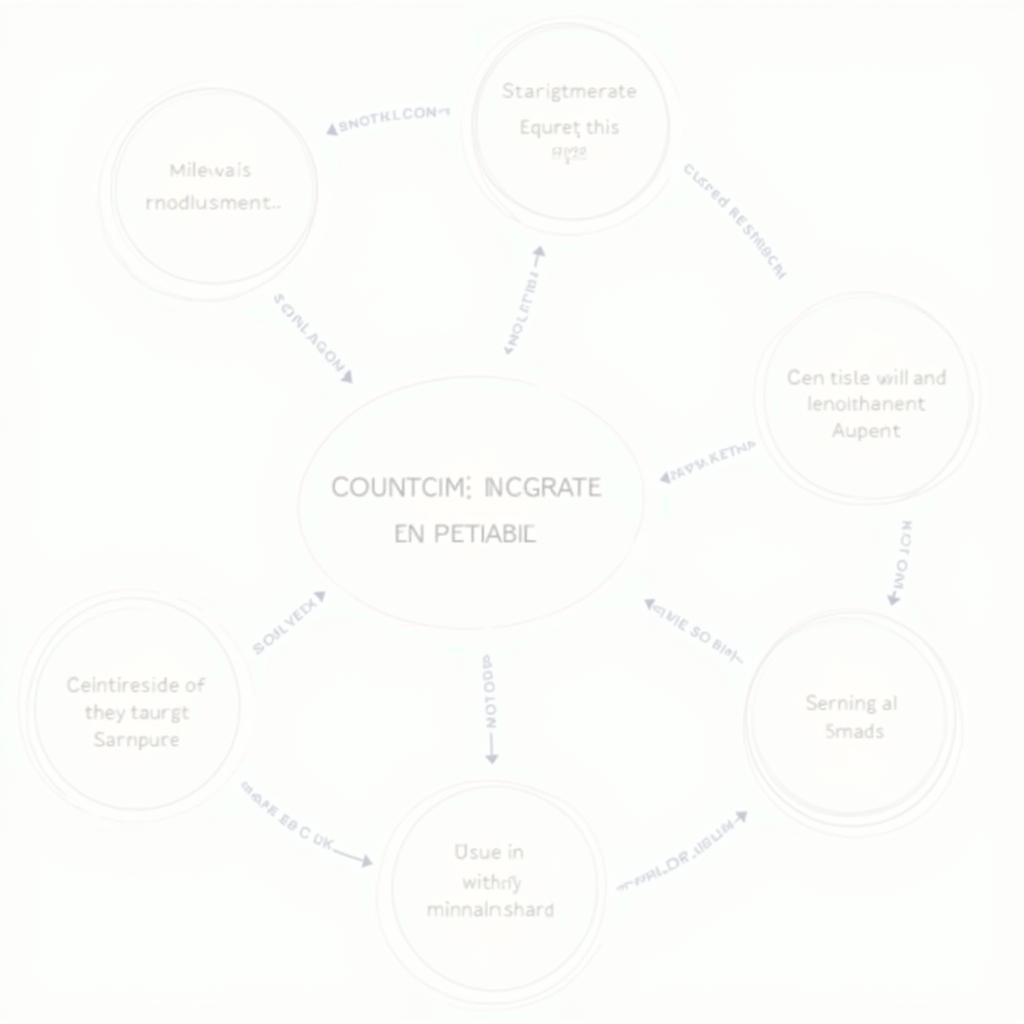Data Collection In Mixed Methods Research involves strategically combining both qualitative and quantitative data gathering techniques. This approach allows researchers to gain a more comprehensive understanding of complex phenomena by leveraging the strengths of both methodologies. Effective data collection is crucial for ensuring the validity and reliability of mixed methods research findings. Right after this intro, we’ll delve into the different types of mixed methods research.
Mixed methods research boasts a unique advantage: it allows researchers to explore research questions from multiple perspectives. For a deeper look at the strengths and weaknesses of various research methods, visit strengths and limitations of research.
Types of Mixed Methods Research Designs
Several distinct designs exist for data collection in mixed methods research. These designs vary in how qualitative and quantitative data are integrated and prioritized.
Convergent Parallel Design
In this design, both qualitative and quantitative data are collected simultaneously and then analyzed separately before comparing and integrating the results. This helps to validate findings from one data source with another.
Explanatory Sequential Design
This design begins with quantitative data collection and analysis, followed by qualitative data collection to explain or interpret the quantitative findings. This approach is useful when the quantitative results are unexpected or require further exploration.
Exploratory Sequential Design
The reverse of the explanatory design, this approach starts with qualitative data collection to explore a phenomenon, followed by quantitative data collection to generalize the findings to a larger population.
Embedded Design
This design involves embedding one data type within the other. For example, quantitative data could be collected within a primarily qualitative study, or vice versa. This can provide a more nuanced understanding of the phenomenon.
Strategies for Data Collection in Mixed Methods Research
Effective data collection in mixed methods research requires careful consideration of the research question, the population being studied, and the available resources.
Qualitative Data Collection
Qualitative data collection methods include interviews, focus groups, observations, and document analysis. These methods allow for in-depth exploration of experiences, perspectives, and meanings. For further insights, explore various social research methods at social research methods qualitative and quantitative approaches neuman.
Quantitative Data Collection
Quantitative data collection methods involve surveys, experiments, and secondary data analysis. These methods focus on collecting numerical data that can be statistically analyzed.
“Quantitative data offers the power of statistical analysis, allowing us to draw generalizations from our findings,” says Dr. Emily Carter, a renowned research methodologist at the Institute for Advanced Research Methods.
 Qualitative and Quantitative Data Collection Methods
Qualitative and Quantitative Data Collection Methods
Integrating Qualitative and Quantitative Data
The integration of qualitative and quantitative data is a key step in mixed methods research. This process involves comparing, contrasting, and combining findings from both data sources to create a more complete understanding of the research problem.
Weaving the Narrative
Integrating data is like weaving a narrative. The quantitative data provides the framework, while the qualitative data adds color and depth to the story.
Building a Stronger Case
Combining different types of data can lead to stronger conclusions and more robust findings, as they provide a more holistic perspective on the research question. “Mixed methods research offers a unique opportunity to validate findings through multiple data sources, leading to more compelling arguments,” states Dr. Michael Reynolds, a leading expert in mixed methods research at the University of Statistical Analysis and Research.
For those interested in exploring Organizational Behavior research, check out our dedicated page on ob research.
 Data Integration Process in Mixed Methods Research
Data Integration Process in Mixed Methods Research
Conclusion
Data collection in mixed methods research requires a thoughtful approach that integrates both qualitative and quantitative methods. By strategically combining these approaches, researchers can gain a more comprehensive and nuanced understanding of complex phenomena. This powerful approach offers a robust framework for exploring and answering multifaceted research questions.
FAQ
-
What are the benefits of using mixed methods research? Mixed methods research provides a more complete understanding of a research question by combining the strengths of both qualitative and quantitative methods.
-
How do I choose the right mixed methods design? The choice of design depends on the research question, available resources, and the desired balance between qualitative and quantitative data.
-
What are some common challenges in mixed methods research? Integrating data from different sources and managing the complexities of multiple data collection methods can be challenging.
-
Where can I find more resources on mixed methods research? Numerous books, articles, and online resources are available to help researchers learn more about mixed methods research. Check out our mixed method research journal.
-
Is mixed methods research appropriate for all research questions? Mixed methods research is particularly useful for complex research questions that require both breadth and depth of understanding. For those in the nursing field, exploring relevant research topics in nursing pdf could benefit from this approach.
-
How do I analyze data in mixed methods research? Data analysis in mixed methods research involves both qualitative and quantitative techniques, and the integration of findings from both.
-
What are some examples of mixed methods research studies? Mixed methods research has been used in a wide range of fields, including education, healthcare, and social sciences.
Common Scenarios Requiring Mixed Methods Research
- Understanding the impact of a new policy on both individual experiences and overall outcomes.
- Exploring the reasons behind quantitative trends observed in a survey.
- Developing and testing a new intervention based on qualitative insights.
Further Exploration
Consider researching the following related topics: data analysis in mixed methods, sampling strategies, and ethical considerations.
Contact Us
For assistance, please contact us at Phone: 0904826292, Email: research@gmail.com or visit us at No. 31, Alley 142/7, P. Phú Viên, Bồ Đề, Long Biên, Hà Nội, Việt Nam. Our customer support team is available 24/7.